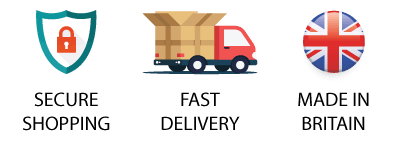Welcome, dear reader, to the wild and wonderful world of vehicle wrapping! This isn’t your grandma’s knitting project, oh no. We’re talking about the art and science of transforming your run-of-the-mill van into a mobile billboard, a veritable canvas on wheels. So buckle up, because we’re about to take a deep dive into the nitty-gritty of van branding.
Vehicle wrapping, in case you’re new to the concept, is a process that involves applying large sheets of printed vinyl to cover a vehicle’s surface, effectively turning it into a moving advertisement or a statement piece. It’s a powerful tool for businesses looking to increase their visibility, or for individuals who just want to stand out from the crowd. But enough with the introductions, let’s get down to business!
The Basics of Vehicle Wrapping
Before we delve into the specifics of van branding, it’s important to understand the basics of vehicle wrapping. It’s not as simple as slapping a sticker on your van and calling it a day. Oh no, there’s a whole process involved, and it requires a certain level of skill and precision to get it just right.
Vehicle wrapping involves applying large sheets of vinyl to a vehicle’s exterior. The vinyl is printed with a design, which could be anything from a company’s logo to a full-blown artwork. The process requires careful planning, precise measurements, and meticulous application to ensure the wrap is smooth and free of bubbles or wrinkles.
Types of Vehicle Wraps
Not all vehicle wraps are created equal. There are different types of wraps to choose from, depending on your needs and budget. The most common types are full wraps, partial wraps, and vinyl lettering.
Full wraps cover the entire vehicle, providing the most dramatic transformation. Partial wraps, as the name suggests, only cover a portion of the vehicle, but can still make a big impact. Vinyl lettering, on the other hand, is the most basic form of vehicle wrapping, involving only the application of cut-out letters, usually for business names and contact information.
Materials Used
The main material used in vehicle wrapping is, of course, vinyl. But not just any vinyl. High-quality, vehicle-grade vinyl is a must for a durable and long-lasting wrap. It’s flexible, allowing it to conform to the vehicle’s curves and contours, and it’s also resistant to weather and UV rays.
Besides vinyl, other materials used in the process include adhesive promoters, which help the vinyl stick to the vehicle’s surface, and lamination film, which protects the printed design from scratches and fading. And let’s not forget the tools of the trade: squeegees, heat guns, and utility knives, among others.
The Process of Vehicle Wrapping
Now that we’ve covered the basics, let’s delve into the process of vehicle wrapping. It’s a multi-step process that requires careful planning, precision, and a good deal of patience. But the results, as you’ll see, are well worth the effort.
The first step in the process is design. This involves creating a digital mockup of the vehicle and designing the wrap to fit its exact dimensions. The design is then printed onto the vinyl using a large-format printer. Once the design is printed and the vinyl is prepared, it’s time for the actual wrapping to begin.
Preparation
Before the vinyl can be applied, the vehicle needs to be thoroughly cleaned and prepped. This involves washing the vehicle to remove any dirt or grime, and then using a special cleaning solution to remove any wax or residue. Any protruding parts, like mirrors or handles, may also need to be removed to ensure a smooth application.
Once the vehicle is clean and dry, an adhesive promoter is applied to help the vinyl stick to the vehicle’s surface. The promoter is usually applied to areas where the vinyl needs to adhere tightly, like around curves or recesses.
Application
The application of the vinyl is a meticulous process that requires a steady hand and a keen eye for detail. The vinyl is carefully positioned on the vehicle, and then applied using a squeegee to smooth it out and remove any air bubbles. A heat gun is used to soften the vinyl, allowing it to conform to the vehicle’s contours.
Once the vinyl is applied, it’s trimmed to fit the vehicle’s shape, and any removed parts are reattached. The vehicle is then left to rest for a period of time to allow the adhesive to cure. After this, the vehicle is ready to hit the road with its new look!
Benefits of Vehicle Wrapping
So, why go through all this trouble to wrap a vehicle? Well, there are several benefits to vehicle wrapping, especially for businesses. For one, it’s a cost-effective form of advertising. Compared to traditional forms of advertising, like billboards or TV ads, vehicle wraps offer a high return on investment.
Vehicle wraps also offer a high level of visibility. A wrapped vehicle can be seen by thousands of people each day, making it a great way to increase brand awareness. Plus, unlike other forms of advertising, vehicle wraps can’t be turned off or ignored. They’re always on, always working to get your message across.
Customization
One of the biggest advantages of vehicle wrapping is the level of customization it offers. With vehicle wraps, you’re not limited to a few standard designs or colors. You can create a wrap that’s as unique as your business, showcasing your brand’s personality and making a strong impression on potential customers.
Whether you want to go bold with a full wrap, or keep it subtle with a partial wrap or vinyl lettering, the choice is yours. You can even change your wrap as often as you like, making it a flexible and versatile form of advertising.
Protection
Aside from its advertising benefits, vehicle wrapping also offers a practical benefit: protection. The vinyl wrap acts as a protective layer over the vehicle’s paint, shielding it from scratches, chips, and the damaging effects of UV rays. This can help to preserve the vehicle’s resale value, making it a smart investment for any vehicle owner.
And the best part? If you ever decide to remove the wrap, the vehicle’s paint will be as good as new, as long as the wrap was properly installed and maintained. So not only do you get a great advertising tool, but you also get an added layer of protection for your vehicle. Talk about a win-win!
Considerations When Choosing a Vehicle Wrap
Choosing the right vehicle wrap for your needs requires careful consideration. There are several factors to consider, from the type of wrap to the design and the installation process. But don’t worry, we’ve got you covered. Here are some things to consider when choosing a vehicle wrap.
First and foremost, you need to decide on the type of wrap. Do you want a full wrap, a partial wrap, or vinyl lettering? The choice will depend on your budget, your advertising needs, and the look you’re going for. Full wraps offer the most impact, but they’re also the most expensive. Partial wraps and vinyl lettering are more affordable, but they may not be as eye-catching.
Design
The design of the wrap is arguably the most important factor to consider. After all, the wrap is a reflection of your brand, so it needs to be on point. The design should be clear and easy to read, even from a distance. It should also be visually appealing, with a good use of color and imagery.
When designing the wrap, keep in mind the vehicle’s shape and size. The design should work with the vehicle’s contours, not against them. Also, remember that the vehicle will be viewed from different angles, so the design should be effective from all sides.
Installation
The installation of the wrap is another important factor to consider. A poorly installed wrap can not only look bad, but it can also damage the vehicle’s paint. So it’s important to choose a reputable installer with experience in vehicle wrapping.
Before choosing an installer, do your research. Check their portfolio, read reviews, and ask for references. And don’t be afraid to ask questions. A good installer will be more than happy to answer your questions and provide you with all the information you need.
Conclusion
And there you have it, folks! A comprehensive guide to vehicle wrapping, from the basics to the benefits and considerations. Whether you’re a business owner looking to boost your brand visibility, or a vehicle enthusiast wanting to give your ride a unique look, vehicle wrapping is a great option to consider.
Remember, vehicle wrapping is not just about making a statement. It’s also about protecting your vehicle and making a smart investment. So why not give it a try? You might just find that it’s the perfect solution for your needs. Happy wrapping!

